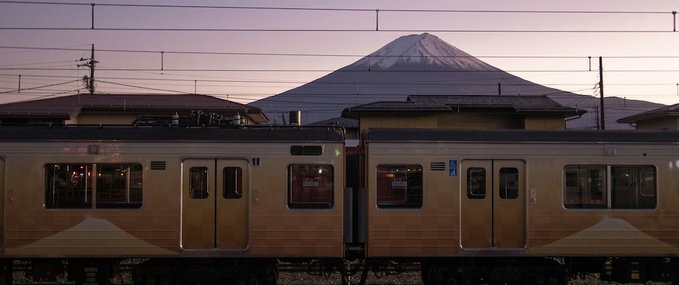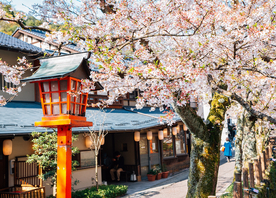Japan’s railways are among the best in the world and offer the perfect way to travel around this amazing country. Read our top tips for getting around.
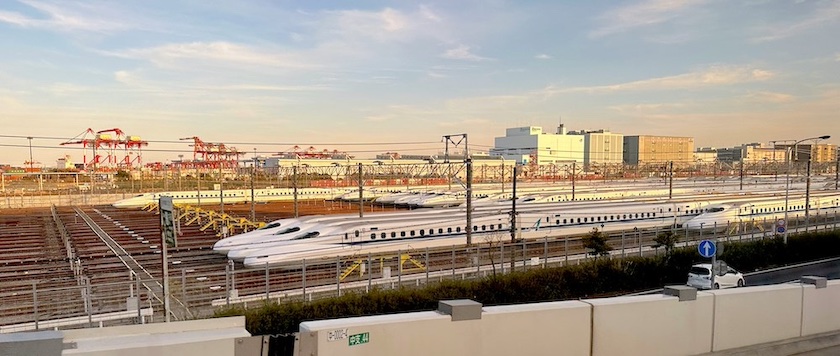
Intro
Japan’s railway system - regularly hailed as the best in the world - connects the country’s major cities, islands, landmarks, towns, and villages, and is undoubtedly the most convenient and affordable way to explore this incredible place. Understanding how to navigate Japan’s railways therefore is absolutely essential to make the most of your time in this special country and to have the very best travel experience. If you want to see as much of Japan as you can and make every second count then we can tell you how with our pro tips for navigating the country’s fast, efficient, and clean railway system. We’ll explain everything you need to know, from train types, seat classes, and buying tickets, to why a Japan Rail Pass is such a smart investment, in our comprehensive train travel guide. All aboard! 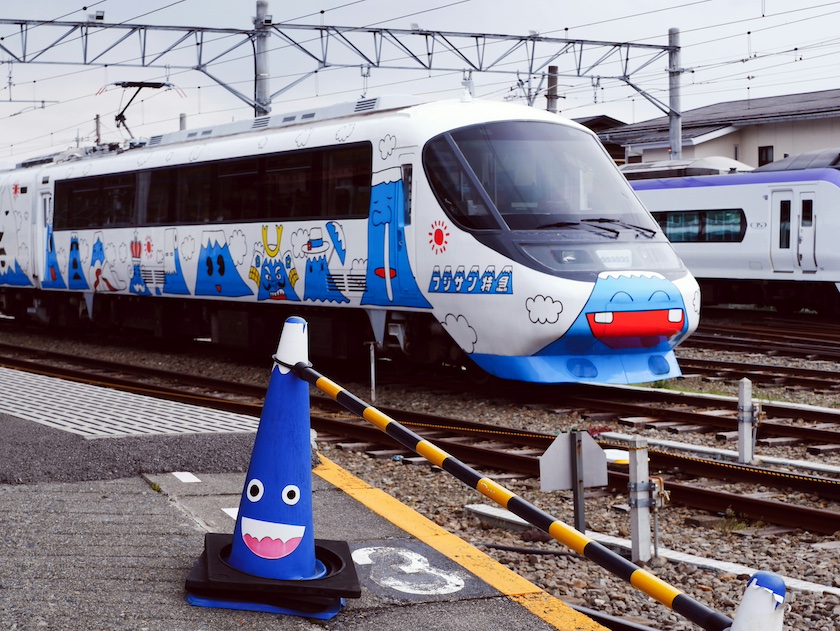
Japan’s Railways: An Overview
Fast, safe, efficient, and clean, Japan’s trains are everything you’ve heard and more. They also connect the entire country, from the northernmost island to the southernmost, enabling travellers to reach everywhere they might want to visit in Japan. Of course, a train system this big and complex can seem a little daunting for first-time visitors and that’s where we come in. Let’s start by giving you a quick overview of the rail system and a few key facts:
- Japan’s Railways are operated by the JR (Japan Railways) Group.
- The JR Group consists of six independent train operators (JR Hokkaido, JR Central, JR East, JR West, JR Shikoku and JR Kyushu). Together, these regional rail companies connect Japan’s six main islands. There are also smaller private companies who run additional services.
- Want to see a map of the whole JR network? We’ve put together an interactive map of the network’s 4,800 train stations and 23,000 km of rail lines, which offers a brilliant resource for anyone planning to explore Japan by train.
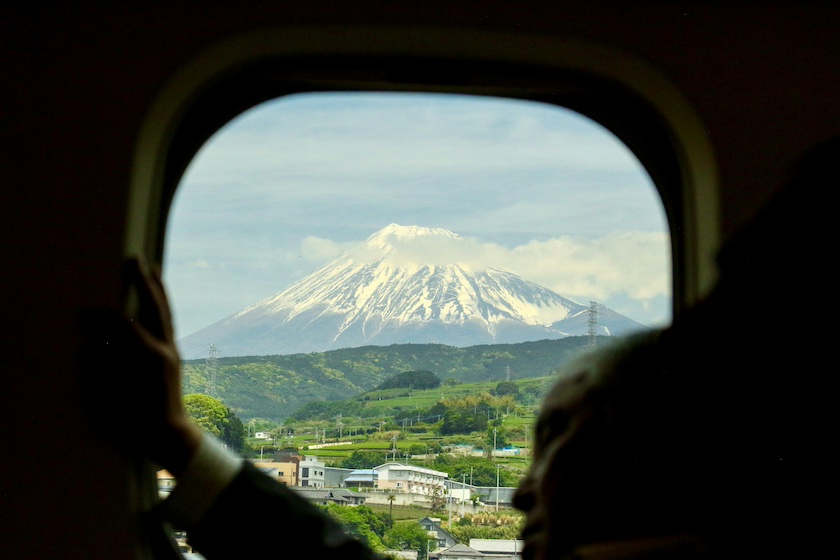
Train Types
There are a number of different train types in Japan, from the famous and futuristic Shinkansen bullet trains to quaint local services.
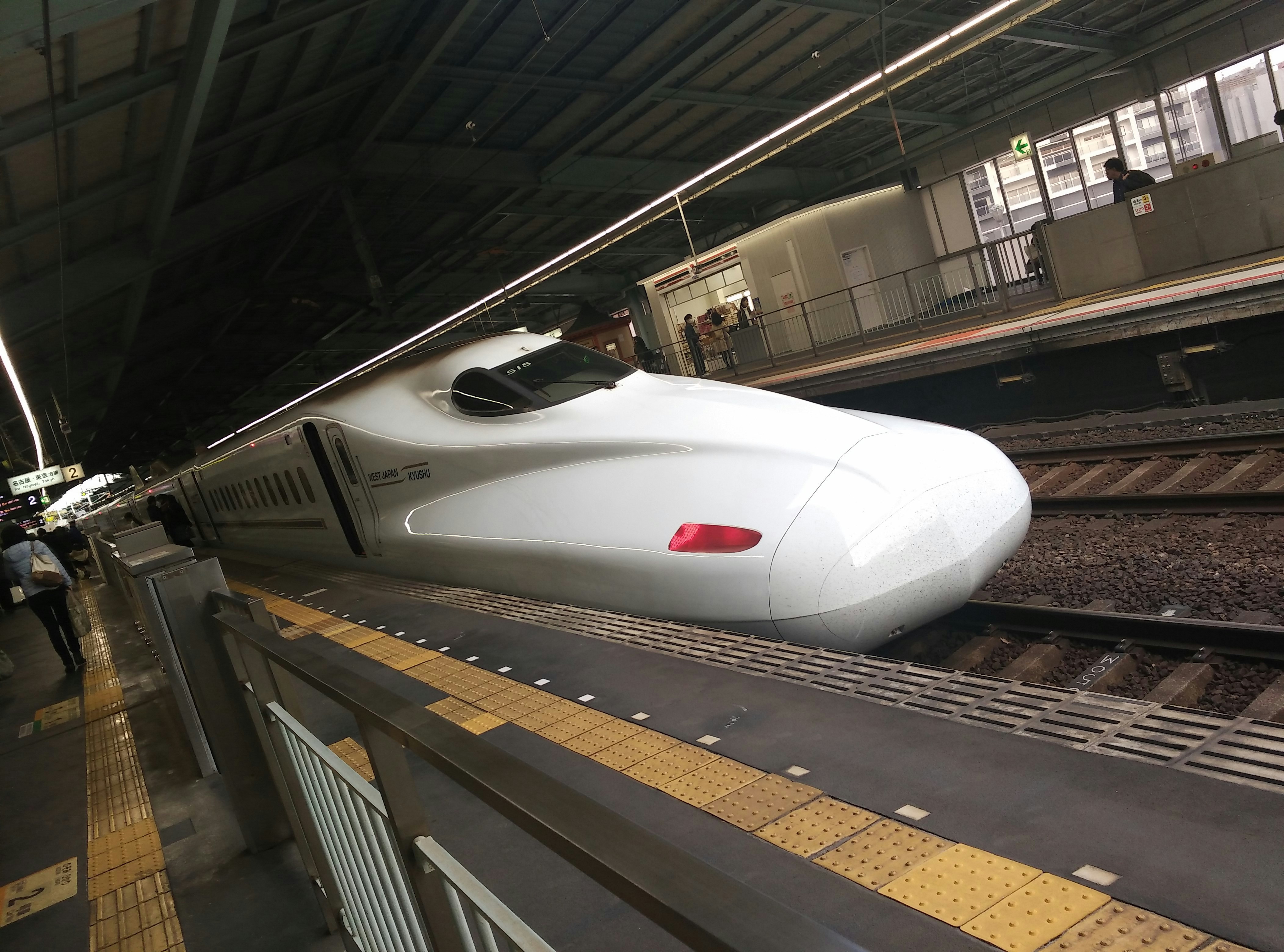
- Shinkansen
The famous ‘bullet trains’ (the nickname comes from the bullet shaped nose of their original design) connect Japan’s main islands, from the city of Sapporo in the north to Kagoshima in the south. In between those two stops, these incredible high-speed trains visit almost all of Japan’s major cities - Tokyo, Nagoya, Kyoto, Osaka, and many more. The Shinkansen are only operated by the JR Group and have separate ticket gates and platforms. Travelling on a bullet train is an attraction in itself for many visitors to Japan. For more information, read our Complete Guide to Travelling on the Shinkansen.
- Limited Express
The fastest non-Shinkansen trains in Japan. Limited Express trains are still very fast and only stop at major stations. There are more than 100 different types.
- Express
Another fast service. Express trains stop at fewer stations than Rapid or Local trains to reach main destinations faster.
- Rapid
Essentially a faster version of the local trains below. These trains skip some minor stations to achieve a faster service. No seat reservations are needed on rapid trains.
- Local
Regular trains that stop at every station. Local trains cost the same as rapid trains above. These trains also don’t have seat reservations.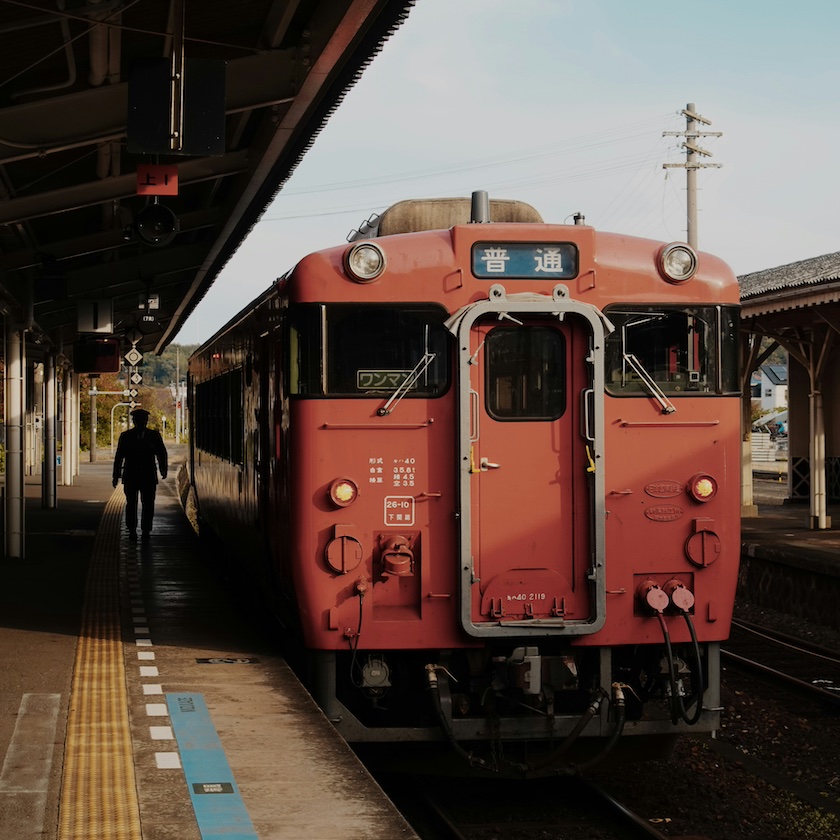
- Special trains
These are generally known as ‘joyful’ trains in Japan and are special trains and services often based around characters, special events, or themes, from Mickey Mouse to restaurant trains and resort excursions. These often come with wide view windows, special comfort seats, beverages and food, and may also involve activities such as a mobile art gallery, local dancing, or even sake tasting.
Seat Classes
While travelling on Japan’s trains, you generally have two main types of seat classes although a third, gran class, is available on some Shinkansen trains.
- Ordinary
These are standard seats. Japan’s ordinary seats are comfortable, spacious, and clean.
- Green Car / Green Class
The equivalent of first class with more luxurious seating and extra space. Green cars can be identified with a four-leaf green clover symbol on the carriage. Extras include drinks, oshibori, hand towels and candy.
- Gran Class
Business-class style luxury seating with perks like eye masks, sake, sashimi, blankets and massage seats. Gran class is only available on certain Shinkansen trains.
Introducing: The Japan Rail Pass
The Japan Rail Pass provides unlimited travel on the entire national JR network, including the high speed bullet train lines and transport to and from the country’s airports. Whether you’re planning to explore the whole country or just travel from Tokyo to Kyoto or Osaka and back again (for example), a JR Pass can offer much better value than purchasing individual tickets - and it’s only available for international visitors.
Passes are valid for 7, 14, or 21 days once activated and give you access to all Japan Railways Group (JR) trains, buses, and ferry services across Japan. This includes the famous Shinkansen bullet trains. One of the many benefits of the JR Pass - alongside unlimited travel on JR trains and the Shinkansen - is free reservations and seat selection. Having a pass means you’ll also be able to hop on and off trains as needed without having to buy a ticket, which gives you a huge amount of extra flexibility as a traveller. Read our guide to The 7 Perks of the Japan Rail Pass for more. You can even upgrade your JR Pass to a Green Class JR Pass, for unlimited first class travel.
Japan Rail Passes can be bought up to three months in advance and need to be activated on your arrival in Japan. For an example of how to do this, read our guide on How to activate the JR Pass on your arrival at Haneda airport, where to exchange the JR Pass, find the JR Ticketing office, and how to travel into Tokyo.Regional JR passes are also available if you’re definitely only visiting one area of Japan. Finally, you can also purchase individual tickets for single and return journeys from self-service ticket machines or ticket counters at stations, although it’s worth noting even if you’re only planning on using the train once or twice during your stay, it might still be better value to use a JR Pass. 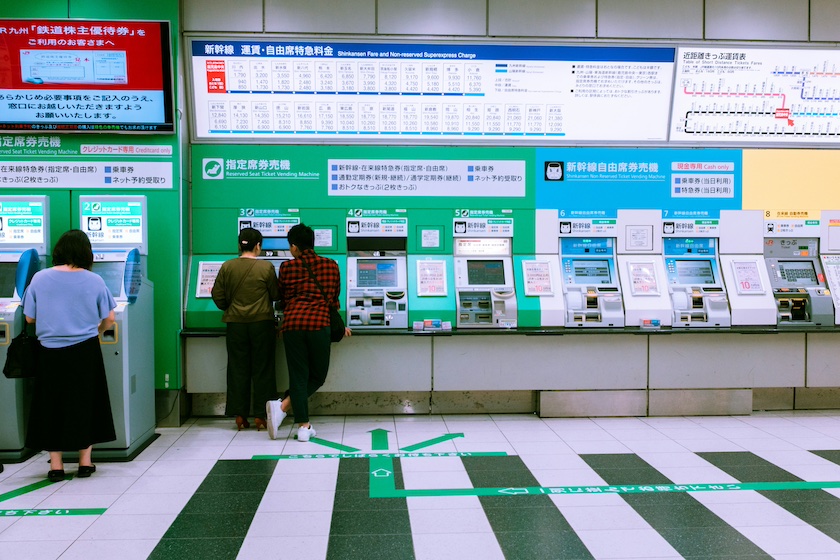
Top Ten Travel Tips for Japan’s Railways
- Planning makes perfect
The more time you spend planning your train journeys before you arrive in Japan, the less time you’ll waste on the ground. If you do your research in advance to work out the best and most efficient train journeys to reach the places most important to you then you’ll spend more time enjoying the destination and less time travelling.
2. Arrive early, never late
Japan’s trains are incredibly punctual and almost always leave on time so it’s a lot better to be early than late. Arrive at the station in plenty of time and you’ll be fine. In fact, you’ll be amazed at how timely Japan’s trains are compared to the rest of the world!
3. Modern technology is your friend
The likes of Google Maps, Navitime, and Jorudan, can be extremely useful for live updates when you’re out and about. Be sure to invest in a PocketWifi device before you travel however to stay connected to the internet when you need it. PocketWifi rentals offer unlimited Wifi from any location, and on up to five devices, allowing you to navigate and check live timetable updates on the go. Read more about usual apps in our guide to Hyperdia alternative
4. Find the right departure platform
One quick tip that can be a lifesaver when in a hurry is learning to find the right departure platform. There can be a lot of information on both your ticket and the departure screens, like train name, stops, type of service and much more. A fast way to find the right platform is to look at the departure times first, then look at everything else. An alternative is to ask what platform your train will depart from when reserving the tickets and ask the staff to write this on your ticket.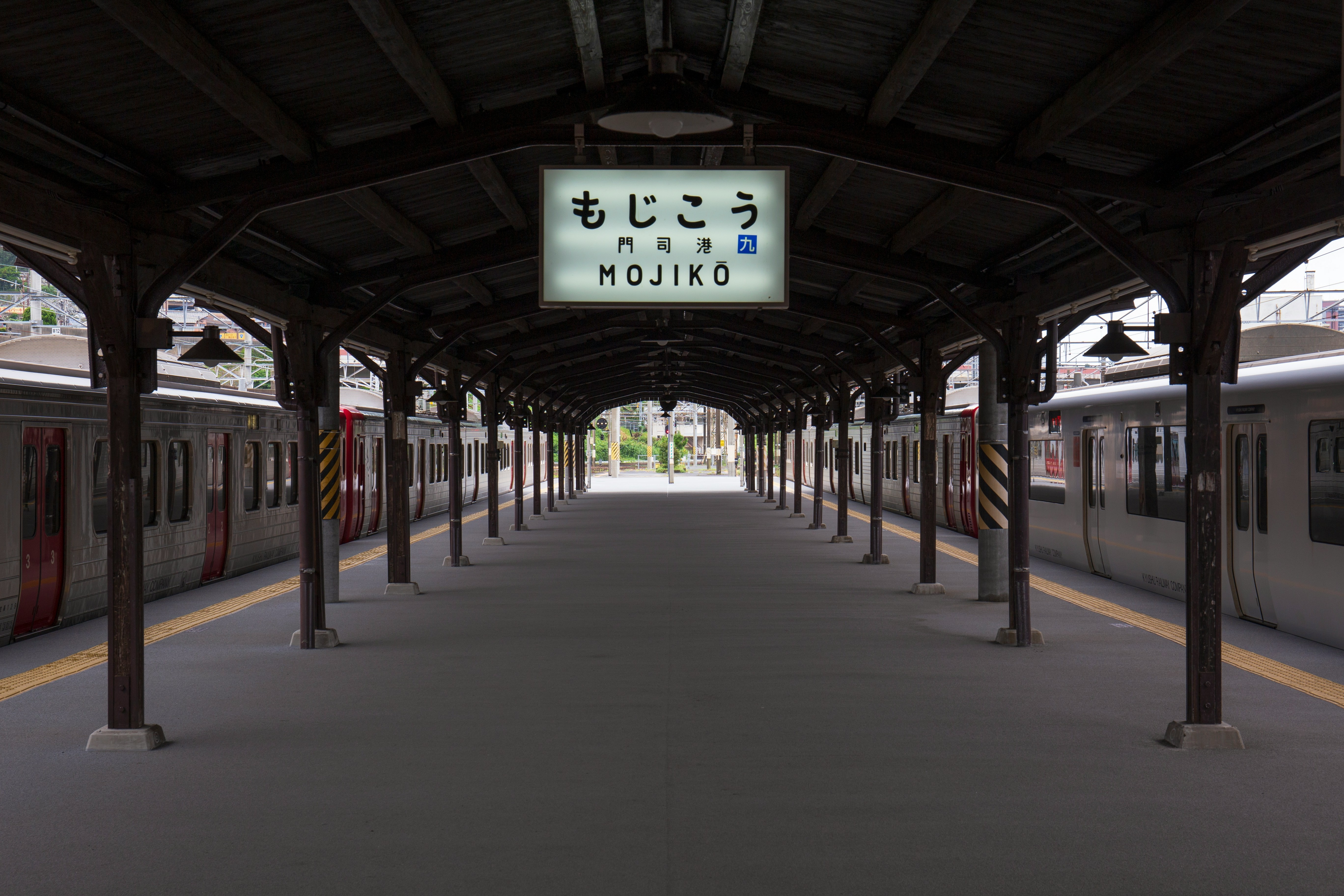
5. Be aware of Japanese train etiquette
Japan is known for valuing good manners and its etiquette rules definitely extend to train journeys. Keep your phone on silent, try to avoid taking calls if possible, listen to music through headphones only, keep your voice down while talking, dispose of your litter, and store your luggage correctly, are all good basic tips if you want to stay in the good graces of Japanese commuters.
6. Check your luggage allowance
Luggage regulations on most of Japan’s trains are fairly relaxed. In general, you may bring any size or number of bags within reason, as long as it does not inconvenience other passengers. The one exception is the Shinkansen bullet trains, which do have more formal baggage regulations. When boarding the Shinkansen, the following regulations apply: You may bring up to two pieces of baggage on board free of charge. For each bag the total of the length, width and height must not exceed 250 centimetres, the length must not exceed two metres and the weight must be no more than 30 kilograms. Luggage pieces less than 160 cm (sum of height x length x width) can be brought aboard without prior reservation. For luggage pieces between 160 cm – 250 centimetres a prior reservation is required, which can be made for free. In case no reservation is made, then a 1,000 yen fine will be charged, and your luggage may be moved by the train conductor. Luggage over 250 centimetres may not be brought on the train and will need alternative transportation. Reservations can be made for free through the Eki-Net App, at a ticket machine or in person at a ticket window. Using the JR Pass, we suggest making your seat reservations and luggage reservations at the same time. JR Pass holders who upgrade to Green Class get an extra luggage allowance of two suitcases per person. Finally, if you have especially large luggage you may want to consider utilising the lockers at stations or luggage forwarding services.
7. Reserved vs non-reserved
Depending on the type of train you’re travelling on, you’ll come across services with reserved and non-reserved carriages. The latter simply means you can sit anywhere within these carriages if you have a non-reserved ticket. In reserved carriages, you will need to have pre-booked your seat reservation in advance. Reservations are free for JR Pass holders and can be made at ticket offices. We have more detailed information on reserving seats further below so keep reading. It is a good idea to reserve a seat if you can. Seat reservations without a rail pass can cost anywhere between 200 and 1,000 yen each, but they are free with the JR Pass, which is another good reason to consider buying one for your trip. Making a reservation not only saves money, it also saves time, as there's no need to queue for a seat at the station platform. You will also have the assurance that you can sit together with your fellow travellers. All reserved seats are guaranteed.
8. Book ahead (or avoid travelling) during busy periods
On a daily basis, you may want to avoid commuter rush-hour periods, which are similar to those in other countries (8am-9am and 5pm-7pm). Otherwise, you’ll also want to be aware of holiday periods when trains might be fully booked. These include New Year, Obon, and Golden Week, which are popular holidays within Japan. The famous Cherry Blossom season is another busy time of year in Japan for tourists. Key dates to watch out for are 28 December to 6 January (New Year), 27 April to 6 May (Golden Week), and 11-20 August (Obon season). The same goes for festivals, like the Gion Matsuri in July, the Takayama Festival from April 14-15 and Tokushima Festival August 12-15. Generally speaking, booking ahead and making seat reservations is a good way to ensure you have a seat whatever time of year it is.
9. You’ll need a prepaid travel card for Japan’s subways
Alongside a JR Pass for countrywide travel, a prepaid travel card for inner city journeys is a must! These IC cards - similar to London’s Oyster card system - are the easiest way to get around Japanese cities using the excellent public transportation. As such, you’ll definitely want to invest in a prepaid travel card such as an ICOCA, PASMO or Suica card. IC cards like these can be topped up and refunded as needed and they work by tapping or waving them over the card reader as you pass through the ticket gates. Check out our Top 30 Tips for Using Japan’s Metros for advice and guidance on using the city’s subway network. As a bonus tip (and not just for train travel), be sure to carry cash where you can in Japan as physical cash is still used a lot across the country
10. Take a moment to enjoy Japan’s trains and train stations
Both Japan’s trains and stations are unique, state-of-the-art, and full of things to see and do. They aren’t just transport hubs or means of transport to get from A to B, they’re an experience in themselves. Make sure you take a little time to stop, look around, and enjoy both the stations and trains themselves as part of your journey. Some stations are major complexes packed with shops, restaurants, and facilities for example while others are picturesque, quaint, and nostalgic. You’ll also find the world’s best train food at stations - Ekiben. Pronounced ‘air key ben’, the Japanese word ‘Ekiben’ is a portmanteau of the kanji symbols for ‘train station’ and ‘boxed meal’ i.e. ‘station-bento’. Its name perfectly describes what it is – a lunch box sold at train stations for eating during your rail journey. Read our Guide to Ekiben for more. Similarly, Japanese trains, particularly the Shinkansen, come with features such as onboard drinks and snacks services, power outlets for phone charging and laptop use, seats that can rotate 180 degrees, and more.
Navigating Japan’s Railway System
When it comes to getting around Japan’s train stations, buying tickets, and boarding trains, you may be pleasantly surprised to discover it is a lot easier and less daunting than you may think. You might be surprised to know that Japanese train stations have signs and departure boards in English as well as Japanese. You may also see signs in Chinese and Korean, reflecting the country’s status as a global travel destination. 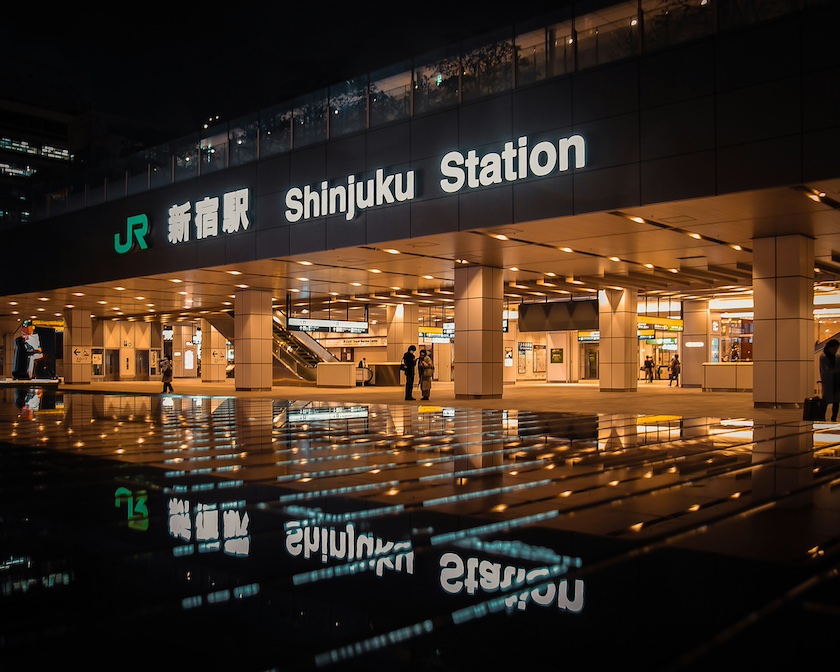
How to Reserve Seats & Board the Train
Japan’s trains have both non-reserved and reserved seats in separate cars. Certain services are fully reserved, and others may be switched to fully reserved during national holidays like the New Year, Obon, or Golden Week, so be sure to check before you travel. If you are travelling with a Japan Rail Pass then one of the many advantages of this is that you can make advance seat reservations for free. Seats can be reserved free of charge at Midori no Mado Guchi ticket offices, recognisable by their green sign, or at Travel Service Centres and JR-associated Travel Agencies. For several years, JR East trains have been the only service that has offered an online English language reservation system, which could be used to make bookings from outside of Japan, with all other lines requiring in-person reservation once in Japan. To reserve a seat, simply take your JR Pass to the Midori no Mado Guchi, specify which train you wish to reserve a seat on, stating smoking or non-smoking. You will then receive your reserved seat ticket and simply need to show your JR Pass at the ticket gate and go to your platform. Be sure to keep hold of your ticket as you may have to present both your JR Pass and seat reservation to the ticket inspector.
As far as boarding a train goes, it’s relatively simple - after arriving at the station, you will need to go through the regular ticket gates into the paid fare zone and head to the platform. Please note if you’re travelling on a Shinkansen train there will be a second set of ticket gates. Shinkansen also have their own dedicated platforms. You’ll find your carriage number on your ticket. Carriage numbers can also be found printed on the ground and hanging from signs (non-reserved carriages are usually numbered 1-5). Line up behind the white line and wait for your train. Once the train arrives, enter your carriage and find your seat (seat numbers are indicated above the window). Otherwise, you can sit in any seat if it’s an unreserved carriage. After that, simply sit back and relax! 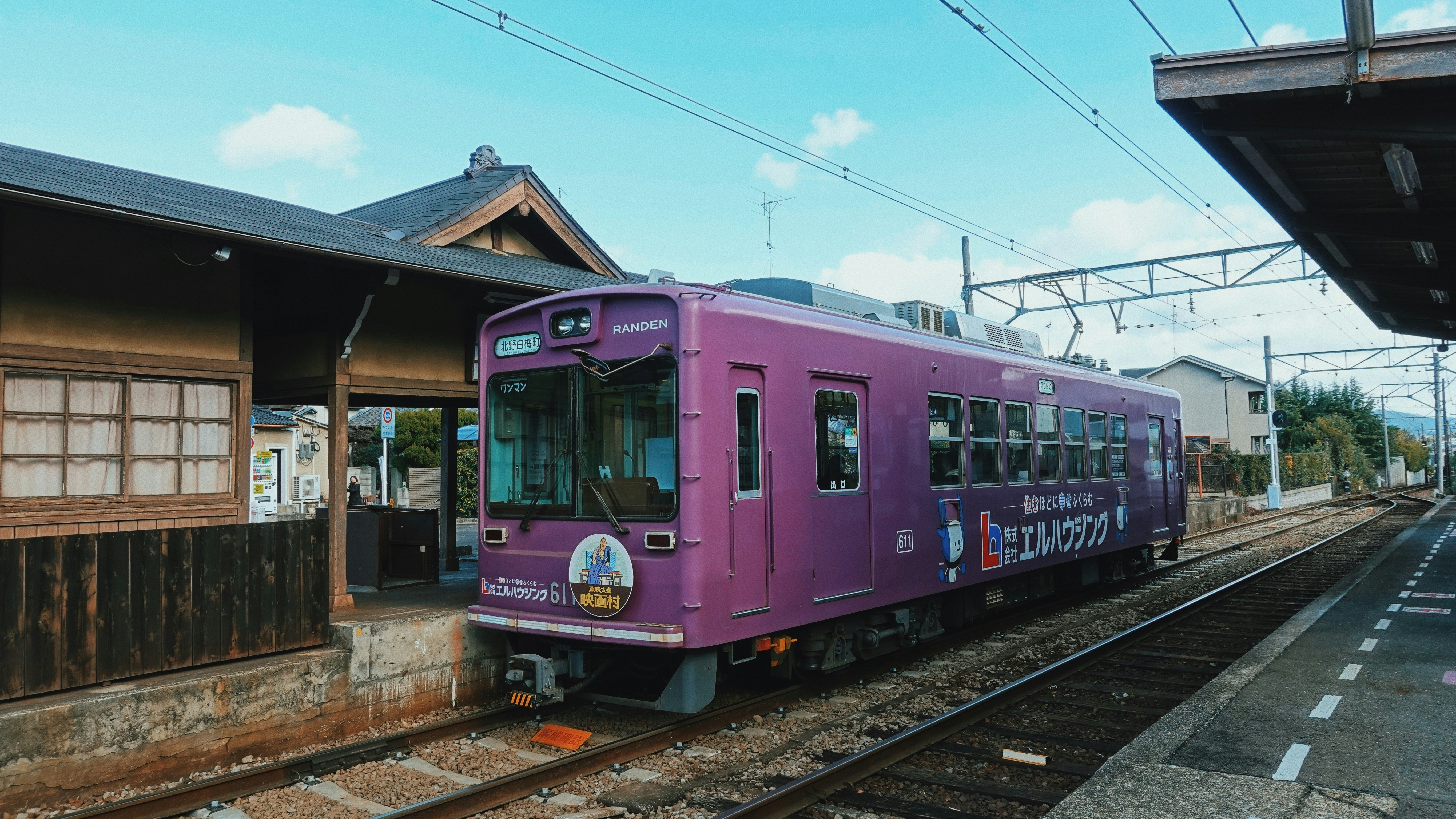
Bonus Recommendations
As you might expect, you’ll find a wealth of fascinating articles on Japan’s railways and train services on our JR Pass blog. These include detailed guides to everything from the famous Shinkansen bullet trains to train food, etiquette, quirky histories, fun facts, and more. Here are a few recommendations to help with your research.
- For those new to travelling by train in Japan, we’ve put together a comprehensive Visitors Guide to Trains and Railways in Japan which offers an indispensable and detailed introduction to the country’s rail network.
- Did you know that Japan has more than 30 different types of trainspotters? Read our guide to Trainspotting in Japan for more.
- From the busiest train station in the world to the best train food you’ll ever have, find out more in our Top Ten Amazing Japanese Train Facts.
- Japan’s trains don’t just connect its amazing cities, they’re also a gateway to the country’s stunning coastlines, untouched rural countryside, and mountain hideaways. Read our guides to Japan’s Coastlines by Train and Japan’s Best Rural Train Journeys for more.
- If it’s your first-time in Japan, one way to make the experience easier is to use our Meet & Greet Service. It’s like having a personal assistant on your arrival in Japan to ensure everything goes smoothly.
